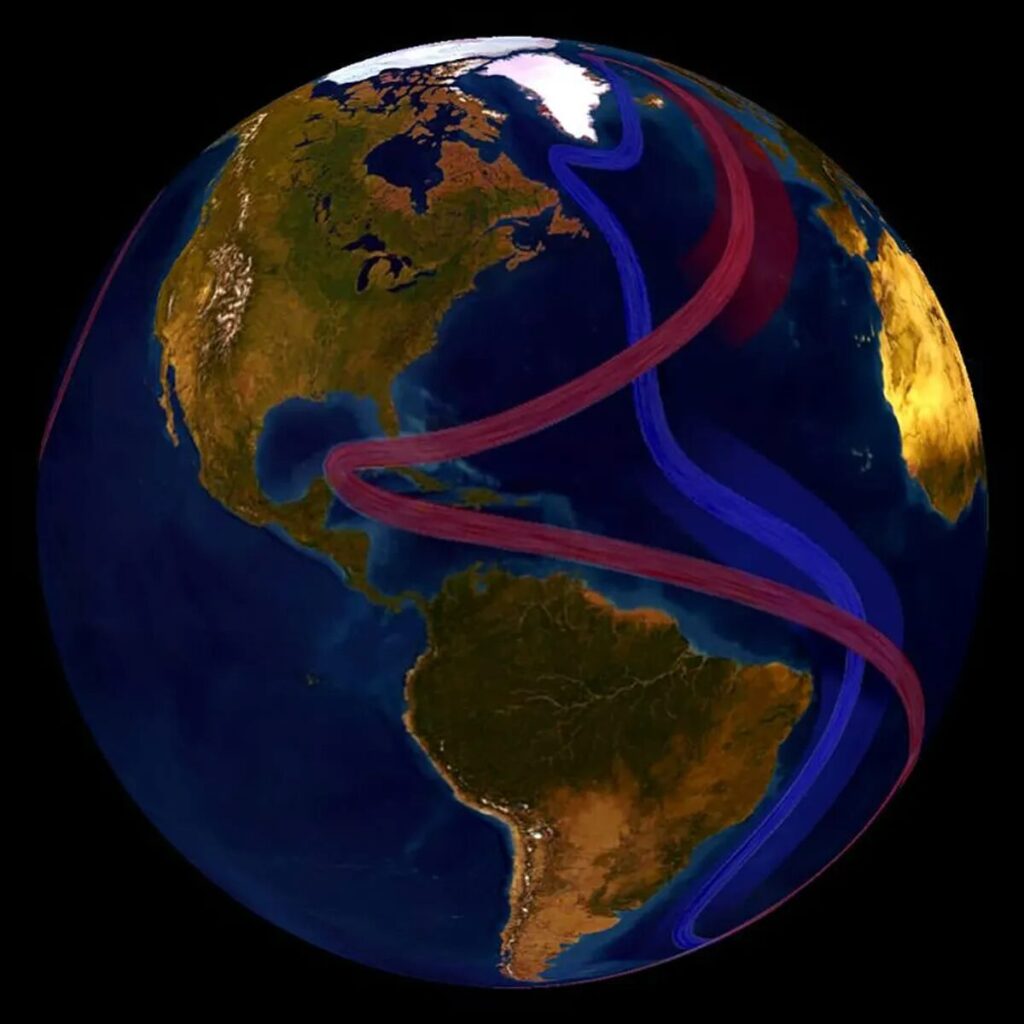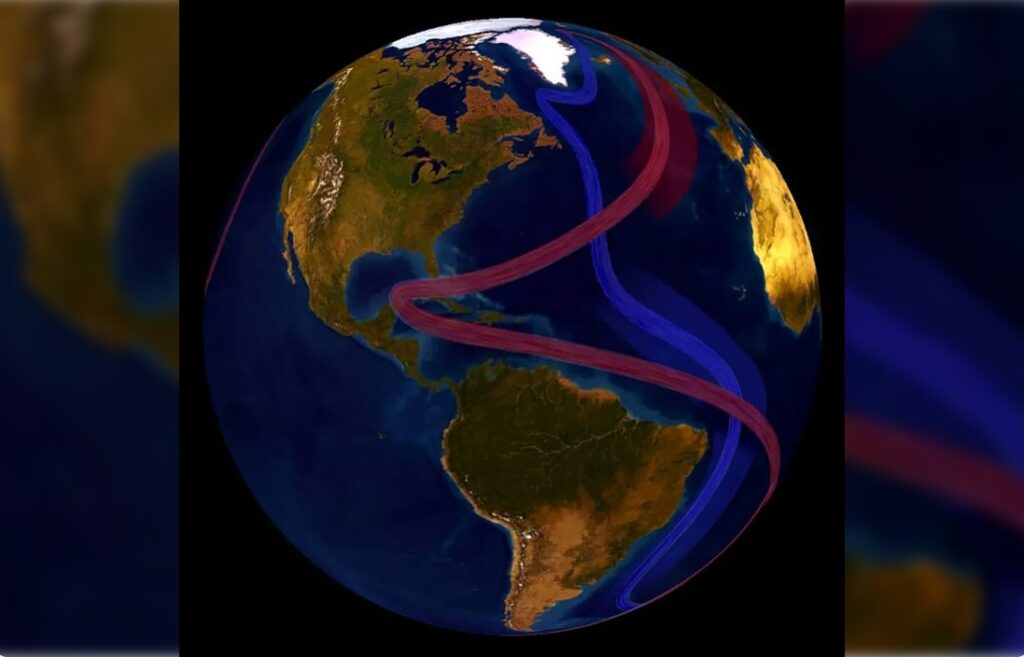
More evidence is suggesting the Atlantic Meridional Overturning Circulation (AMOC) is approaching its tipping point.
Another study has concluded that the Atlantic Meridional Overturning Circulation (AMOC), “the conveyor belt of the ocean” that carries warm water from the tropics northwards into the North Atlantic, is approaching its tipping point. If their findings are accurate, the collapse will have profound impacts on the world’s climate.
The AMOC plays a lead role in pushing heat and freshwater around the Atlantic via a network of deep and near-surface ocean currents. It works by transferring warm and salty surface water from the tropics through the North Atlantic. When it approaches the North Pole, it cools and forms sea ice. The remaining water then sinks and is carried southwards in the depths below, completing the cycle.

Image credit: NOAA
By bringing warmer water towards the North Pole, it helps to foster warmer weather conditions in Northwest Europe and the North Atlantic. Without the AMOC, these parts of the planet would be a lot chillier.
The big fear is that climate change could upset the cycle beyond repair. Numerous studies have suggested that the AMOC is slowing down and flowing at its weakest rate for centuries.
Likewise, most models show that AMOC will continue to slow down as the climate crisis deepens, although it’s debated how strong and fast the slump will be. One piece of recent research suggested it could collapse in decades, perhaps even years, although that proved to be a controversial claim.

In a new study, scientists at Utrecht University in the Netherlands claim they have found a new way to detect an early warning signal that the AMOC is approaching collapse. They ran a giant computational model that simulates the flow of surface freshwater around the North Atlantic over the course of 2,200 years.
The key finding is that the movement of freshwater in the Atlantic around the 34th parallel south, the southern boundary of the Atlantic, could help predict an impending collapse in the AMOC. By looking at the minimum amount of freshwater being shifted upwards from this southern part of the Atlantic, they were able to tell if the AMOC would collapse in the next 20 years.
When they compared the model’s findings to real-world data, it confirmed what most other models have been suggesting: “the present-day AMOC is on route to tipping.”

“The results here give a clear answer to a long-standing problem around in the climate research community concerning the existence of AMOC tipping behavior in GCMs [global climate models],” the study authors write.
“Yes, it does occur in these models. This is bad news for the climate system and humanity as up until now one could think that AMOC tipping was only a theoretical concept and tipping would disappear as soon as the full climate system, with all its additional feedbacks, was considered,” they conclude.
The researchers (wisely) didn’t put a specific time and date on the potential tipping point, although they did note that the AMOC collapse would “dramatically” upset the distribution of heat across the world’s oceans and beyond.

Leave a Reply